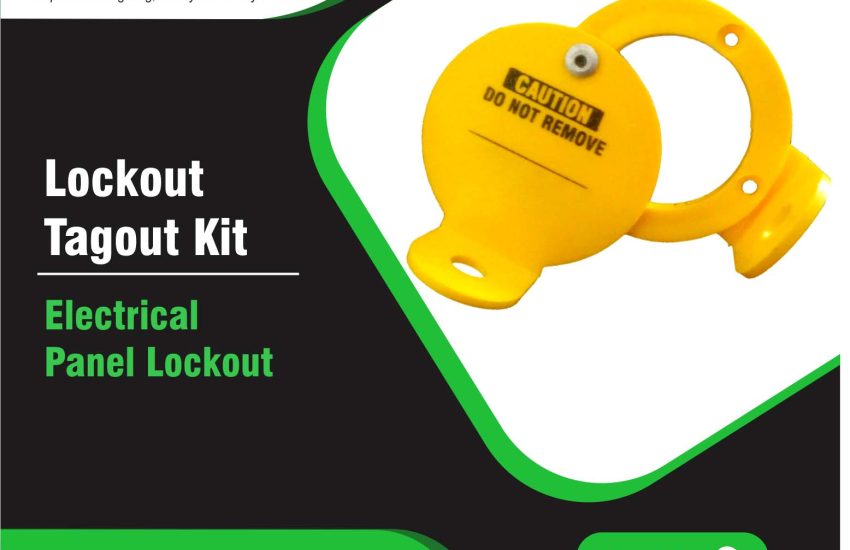Electrical Panel Lockout Tagout Electrical safety is crucial in both industrial and commercial settings. Hazards like shock, arc flash, and short circuits present serious risks to workers during maintenance or repair work. One essential safety device used to prevent these electrical dangers is the Electrical Panel Lockout. This device ensures electrical panels remain de-energized, blocking unauthorized access and preventing accidental activation. In this article, we will explore the specifications, features, and benefits of Electrical Panel Lockouts, with SEO-friendly keywords to optimize search engine visibility.
What Is an Electrical Panel Lockout?
An Electrical Panel Lockout is a safety device that locks electrical panels, circuit breakers, and switches during maintenance or repair. It prevents accidental system activation, reducing the risk of electrical hazards. These lockouts are essential for compliance with OSHA lockout/tagout standards, ensuring workers cannot inadvertently energize circuits during maintenance activities.
Why Use an Electrical Panel Lockout?
Using an Electrical Panel Lockout provides multiple benefits:
- Prevent Accidental Energization: The lockout prevents unauthorized personnel from turning on the electrical system, which minimizes the risk of shock and accidental activation.
- Ensure Compliance: Lockouts help meet OSHA lockout/tagout regulations, ensuring proper control of hazardous energy during maintenance.
- Enhance Worker Safety: These devices secure panels, reducing the risk of electrical accidents and worker injuries.
- Protect Equipment: By preventing accidental activation, lockouts protect sensitive equipment from damage caused by improper handling.
Specifications of an Electrical Panel Lockout
When choosing an Electrical Panel Lockout, consider these key specifications to ensure safety and compatibility:
1. Material and Durability
- Durable Materials: Polycarbonate, ABS plastic, or steel are common materials for lockouts, providing resistance to impact, heat, and corrosion.
- Chemical Resistance: For facilities exposed to chemicals, select lockouts made from chemical-resistant materials to ensure long-lasting performance.
2. Size and Compatibility
- Adjustable Design: Many Electrical Panel Lockouts feature adjustable designs to fit various panel sizes and types, offering versatility.
- Universal Fit: Some lockouts are designed to fit multiple electrical panel types, making them ideal for facilities with different systems.
3. Locking Mechanism
- Single or Multiple Locks: Some lockouts support a single lock, while others allow multiple locks, enabling several workers to secure the system during maintenance.
- Locking Pins and Holes: These devices often include locking pins that fit into holes in the panel or switch to prevent accidental activation.
4. Ease of Use
- Tool-Free Installation: High-quality lockouts allow for quick, tool-free installation, simplifying the locking process for workers.
- Visible Colors: Bright colors like red, yellow, or orange improve visibility, promoting safety awareness in industrial environments.
5. Safety Features
- Tamper-Proof: Some models feature tamper-resistant designs that prevent bypassing, ensuring the lockout remains intact during maintenance.
- Weather Resistance: Many Electrical Panel Lockouts are designed to withstand UV rays, rain, and extreme temperatures, ensuring durability in all environments.
Types of Electrical Panel Lockouts
There are several types of Electrical Panel Lockouts, each designed for specific applications:
- Circuit Breaker Lockouts
These devices are specifically designed to secure circuit breakers, preventing accidental re-energization of the system. - Panel-Specific Lockouts
Tailored to fit specific types or brands of electrical panels, these lockouts ensure complete de-energization of the system. - Universal Electrical Panel Lockouts
These adjustable lockouts are compatible with various panel types and offer flexibility for different electrical systems. - Push-Button or Rotary Lockouts
These lockouts are ideal for securing push-button or rotary switches, preventing operation during maintenance work.
Key Benefits of Electrical Panel Lockouts
- Increased Safety: Electrical Panel Lockouts prevent electrical shocks and other accidents by keeping the system de-energized during maintenance.
- Improved Compliance: These lockouts ensure compliance with OSHA lockout/tagout regulations, protecting workers from hazardous energy exposure.
- Reduced Equipment Damage: Lockouts protect equipment from accidental activation, reducing the risk of damage caused by incorrect operation.
- Clear Communication: Many Electrical Panel Lockouts include lockout tags, which help workers communicate the status of the lockout and identify the responsible person.
Conclusion
Electrical Panel Lockout Tagout is a vital safety device that helps protect workers from electrical hazards. By preventing unauthorized activation of electrical panels, circuit breakers, and switches, lockouts increase safety, protect equipment, and ensure compliance with OSHA regulations.
When choosing an Electrical Panel Lockout, consider factors like material durability, size compatibility, and ease of use. Implementing these devices in your facility will create a safer work environment and help maintain the integrity of your electrical systems. Whether you need adjustable lockouts, tamper-resistant designs, or weather-resistant solutions, an Electrical Panel Lockout is available to meet your needs.


